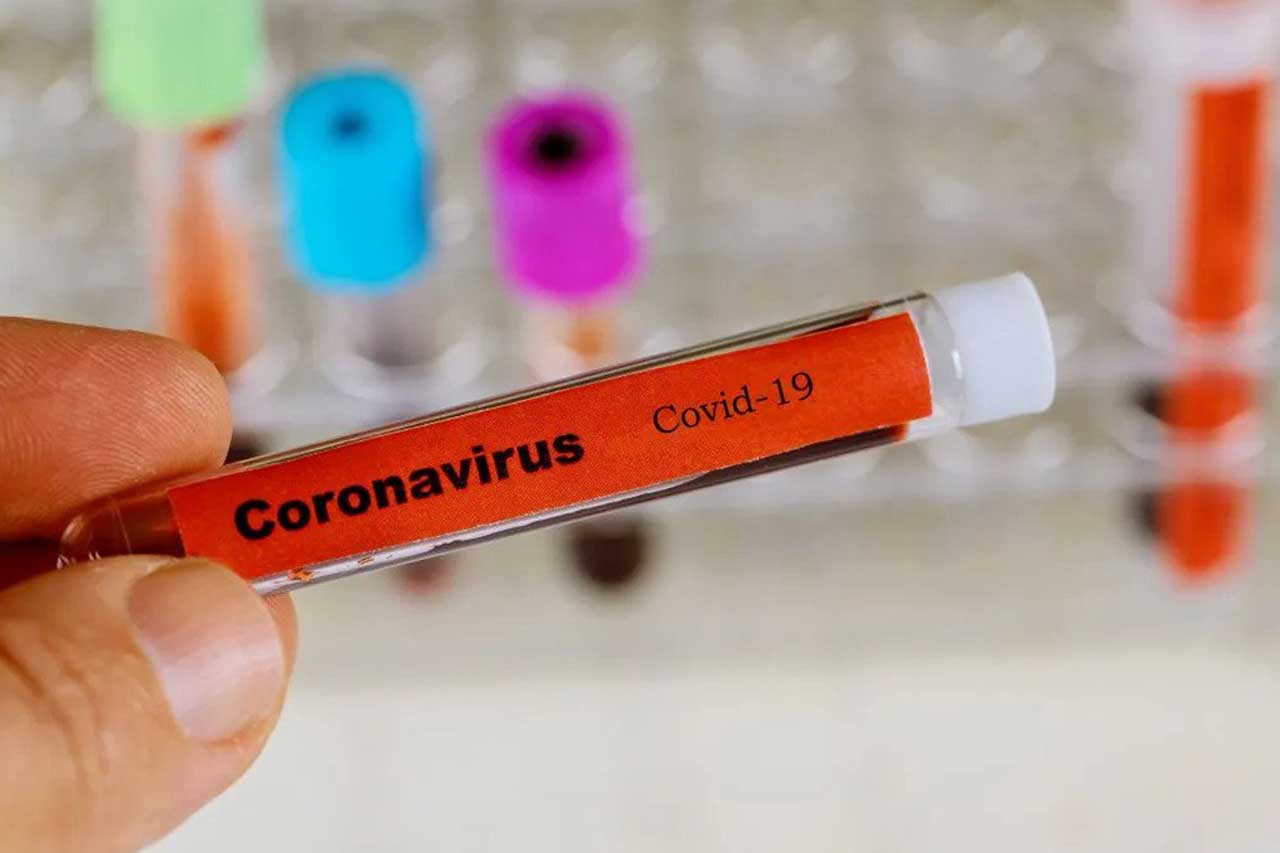
China reported nearly 3,400 daily COVID-19 cases on Sunday, double the previous day, forcing lockdowns in virus hotspots as the country contends with its gravest outbreak in two years www.theguardian.com/world/2022/mar/13/china-battles-worst-covid-outbreak-for-two-years-as-cases-double-in-24-hours?
A nationwide surge in cases has seen authorities close schools in Shanghai and lock down several north-eastern cities, as almost 19 provinces battle clusters of the Omicron and Delta variants.
The city of Jilin has been partially locked down, with hundreds of neighbourhoods sealed up, an official announced Sunday, while Yanji, an urban area of nearly 700,000 bordering North Korea, was fully closed off.
China, where the virus was first detected in late 2019, has maintained a strict zero-COVID policy enforced by swift lockdowns, travel restrictions and mass testing when clusters have emerged.
But the latest flare-up, driven by the highly transmissible Omicron variant and a spike in asymptomatic cases, is challenging that approach.
////
Hong Kong is paying a heavy price for the vaccine hesitancy among its older residents, as a comparison with New Zealand underscores. (www.science.org/content/article/news-glance-hong-kong-s-high-covid-19-death-rate-biden-s-test-and-treat-and?)
Both countries minimized COVID-19 cases until the Omicron variant spread in February, but are now enduring big surges. Although New Zealand’s deaths from COVID-19 have remained flat—at 65 for the whole pandemic as of 7 March—Hong Kong’s have skyrocketed, with the weekly average nearing 200 per day, among the world’s highest recorded fatality rates. The key difference seems to be vaccination: New Zealand authorities say 100% of residents 75 and older are fully vaccinated (and 96% of those ages 12 and up), but in Hong Kong only about 30% of those 80 and older have received two doses of a COVID-19 vaccine. (The figure is 70% for all adults and children ages 3 and above.)
////
The United States government this week began to ship antiviral pills for a program of free testing and immediate, free drug treatment for those with COVID-19 at hundreds of pharmacy clinics and long-term care facilities. (www.science.org/content/article/news-glance-hong-kong-s-high-covid-19-death-rate-biden-s-test-and-treat-and?)
The “test to treat” plan—one of several new proposals announced last week by President Joe Biden’s administration to manage the pandemic as U.S. caseloads drop—is aimed at helping people who lack ready access to a physician. The antiviral pills being dispensed work best if given quickly after diagnosis. Many public health officials and scientists applauded the proposal. But the American Medical Association complained that COVID-19 drugs could interact harmfully with drugs for other conditions and that physicians, who don’t typically staff pharmacies, are best equipped to prescribe them safely.
////
In March 2020, the Austrian ski town of Ischgl suddenly became infamous as the site of one of the first COVID-19 superspreading events. Hundreds of infected skiers took the virus home and seeded outbreaks all around Europe.
As the pandemic progressed, however, Ischgl was on the vanguard for a more positive reason: Health officials and scientists in the state of Tyrol were among the first to monitor levels of the pandemic coronavirus in sewage—and base health policy decisions on them (www.science.org/content/article/pandemic-signals-sewer-what-virus-levels-wastewater-tell-us?)
Because the region is so dependent on tourism, officials were eager to know whether the virus was truly on the decline so they could lift key restrictions. They also wanted to catch the earliest possible signals that it might be coming back. Wastewater analysis, which picks up fragments of virus shed in faeces, was invaluable, says Stefan Wildt, a wastewater expert at the state’s department of water management. Following Tyrol’s lead, a national program has recently expanded to cover more than half of Austria’s population.
Although wastewater monitoring has been used to track polio and other pathogens for decades, the COVID-19 pandemic has led to an explosion of interest. The technique takes advantage of the fact that SARS-CoV-2 replicates in the digestive system and is shed in high quantities, often before symptoms appear.
That provides an inexpensive way to monitor infections in thousands or even millions of people without annoying nose or throat swabs, or to predict where cases might be about to surge and hospitals risk getting overburdened. The genetic sequences of the shed virus can also provide hints about how it is evolving.
Scientists in the Netherlands, which has had a nationwide network of wastewater monitoring for decades, were among the first to show fragments of SARS-CoV-2 virus in wastewater samples could accurately reflect its levels in the community. Since then, monitoring projects for SARS-CoV-2 have sprung up in at least 58 countries, according to a dashboard set up by Colleen Naughton and colleagues at the University of California (UC), Merced. The European Union recommended all member countries establish monitoring systems for SARS-CoV-2 by October 2021, and 26 of 27 have complied, says Bernd Manfred Gawlik, who is helping coordinate efforts through the European Commission.
In the United States, the National Wastewater Surveillance System includes 400 sites in 19 states. Last month, the U.S. Centers for Disease Control and Prevention added a national dashboard of wastewater data, and on 2 March, President Joe Biden’s administration said the monitoring system will be part of the effort to detect new variants. In India, a successful project in Bengaluru is expanding to half a dozen new cities.
Still, the jury is out on just how useful the technology is. Reliably determining viral levels in wastewater has posed logistical and technical challenges, and interpreting the data can be difficult. (For one, a good downpour will send dilute virus concentrations in sewers). Establishing collection, testing, and reporting systems can be time consuming and expensive as well. And although policymakers have welcomed the results of wastewater monitoring, few have used them to take action; typically, they have waited for cases to rise and intensive care units to fill up.
////
As the Omicron coronavirus surge subsides, researchers are keeping an eye on a highly transmissible subvariant known as BA.2. Although it doesn’t appear to have the capacity to drive a large new wave of infections, the variant could potentially slow the current decline of Covid cases and make treatments more difficult.
Scientists first discovered the Omicron variant in November, and it quickly became clear that the viral lineage already existed as three genetically distinct varieties. Each branch of Omicron had its own set of unique mutations. At the time, the most common was BA.1, which quickly spread across the world. BA.1 was almost entirely responsible for the record-shattering spike in cases this winter.
At first, BA.1 was a thousand times as common as BA.2. But in early 2022, BA.2 started to be found in a larger proportion of new infections.
All versions of Omicron are highly contagious, which is why the variant swiftly crowded out earlier forms of the coronavirus, like Delta. But a number of studies have found that BA.2 is even more transmissible than BA.1.
In Denmark, for example, scientists examined the spread of both subvariants in households. They found that people infected with BA.2 were substantially more likely to infect people they shared a house with than those with BA.1. In England, researchers found that it took less time on average for someone with BA.2 to infect another person, accelerating its spread through communities.
In early 2022, BA.2 was growing more common in a number of countries. By February, it had become dominant worldwide, driving down the once-dominant BA.1. In the United States, the Centres for Disease Control and Prevention estimated that BA.2 jumped to 11 percent in early March from 1 percent in early February. It could soon become dominant in this country as well.
But that does not mean that Americans are riding a new BA.2 wave that is infecting a lot of new people. As BA.2 became more common in the United States, the total number of new cases fell by about 95 percent. Worldwide, the number of daily new cases had fallen to half of what they were at their peak in late January.
As many countries relax their protections against the spread of Covid, they may make it easier for BA.2 to drive a new increase in cases. A March 10 report from British researchers suggests that may be happening there now.
But there are a number of reasons that epidemiologists doubt that BA.2 will drive a massive new surge.
One of Omicron’s most striking features was its ability to partly evade the protection of vaccines. “Breakthrough” infections became more common, helping to drive the case surge to its record high. But the vaccines continued to protect people against severe disease, especially those who received a booster. Throughout the Omicron surge, vaccines remained highly effective against hospitalization.
/////
Lalita Panicker is Consulting Editor, Views, Hindustan Times, New Delhi

